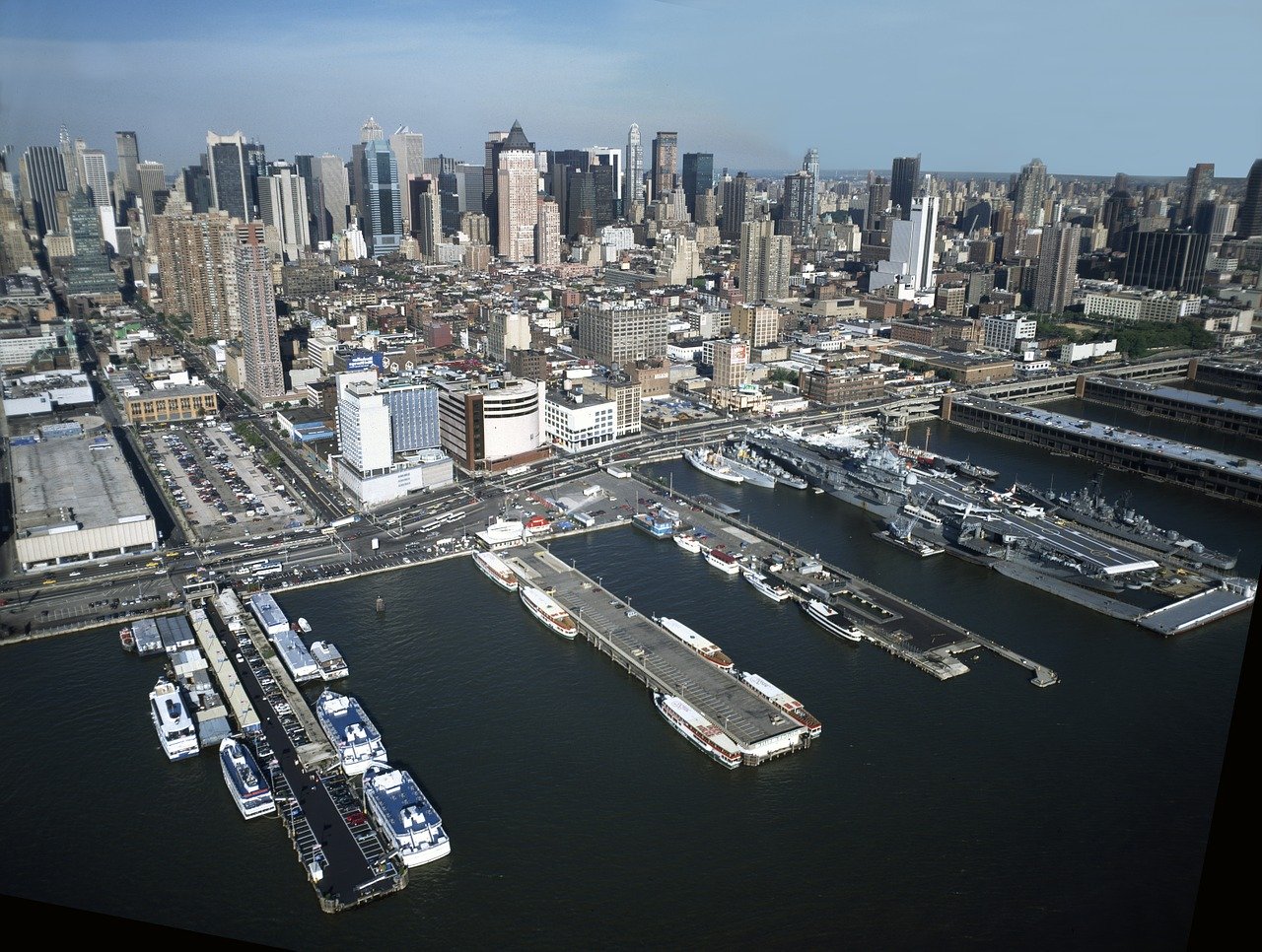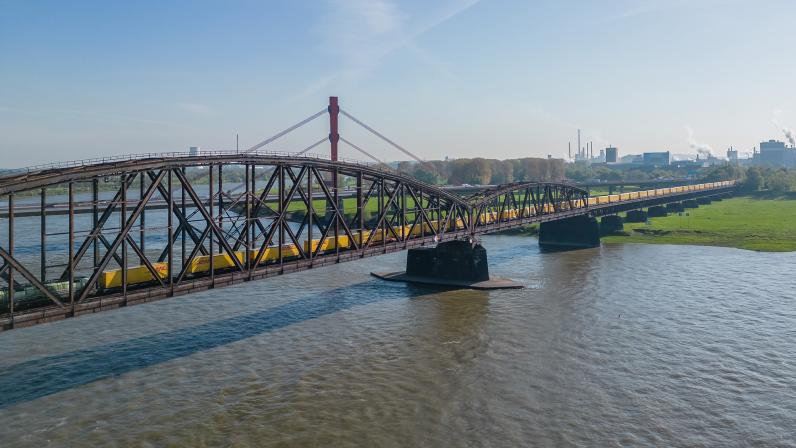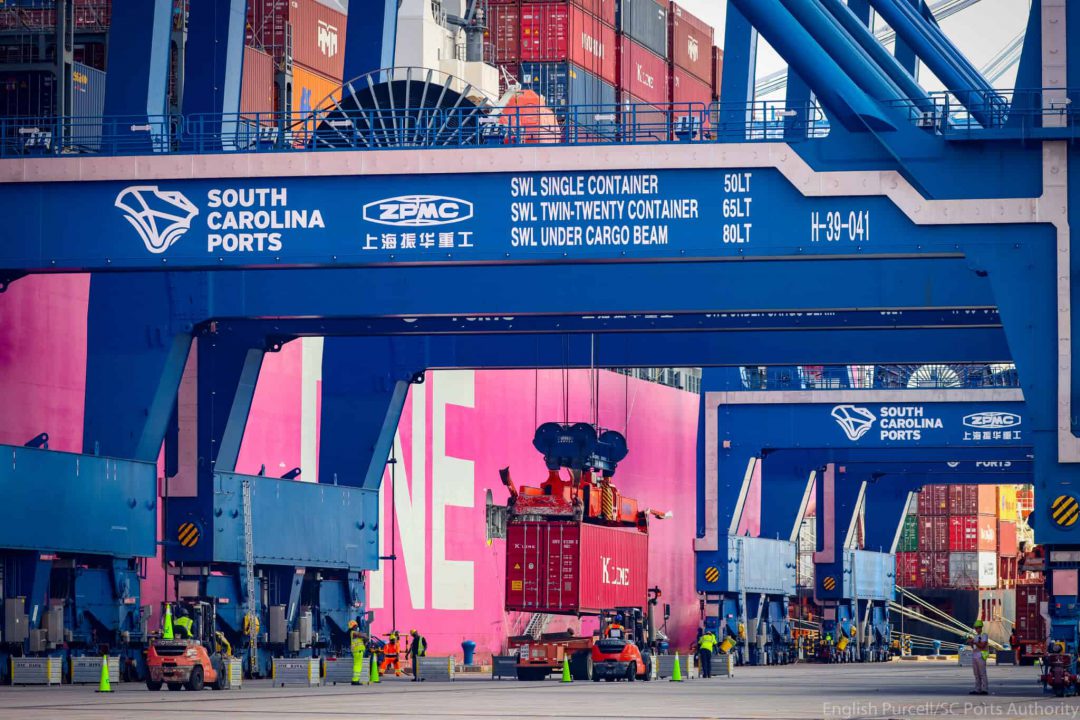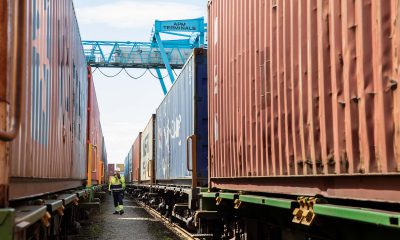The Port Authority released its 2019 passenger and cargo volume data across its facilities which established new records at the airports, seaport, PATH system, Goethals Bridge and Staten Island Bridges.
The record volumes validate the agency’s historic $37 billion 10-year Capital Plan to rebuild and significantly upgrade its legacy facilities that were built decades ago to handle far smaller volumes of people and cargo.
“We have taken aggressive steps in the past year to invest in building new, modern facilities and to upgrade existing legacy infrastructure to handle the record passenger and cargo volumes we continue to experience every year,” said Port Authority Chairman Kevin O’Toole. “From the new LaGuardia Airport, to the new Terminal One at Newark Liberty, to the redeveloped JFK Airport, we intend to make an unprecedented level of investment in our infrastructure to create a network of state-of-the-art facilities that provide an unparalleled level of customer experience.”
“Our legacy facilities were built to handle passenger and cargo volumes from a bygone era and simply cannot continue to support the record level of activity they must now handle on a daily basis,” said Port Authority Executive Director Rick Cotton. “That’s why we are firmly committed to rebuild our airports and build new rail mass transit links to them, rebuild the nearly 70-year-old Port Authority Bus Terminal, modernize the PATH system and upgrade our port to enable all facilities to handle continued growth.”
Airports:
During 2019, the Port Authority handled a record 140.5 million passengers at its four commercial airports – John F. Kennedy International, Newark Liberty International, LaGuardia and New York Stewart International airports – an increase of 1.6 percent over the previous record of 138.2 million passengers handled in 2018. The biggest percentage increase was reported at LaGuardia Airport. Despite a new airport being under construction with temporary roadways across much of the airport, LaGuardia handled 31 million passengers in 2019, a 3.3 percent increase over the previous record passenger volume handled in 2018. JFK Airport reported a 1.5 percent increase in passengers, including new records for both domestic and international travelers. And at Newark Liberty, more than 46 million passengers passed through the airport, a 1 percent increase in air passengers over the previous 2018 record volume.
Rail mass transit use at John F. Kennedy International and Newark Liberty International continued its record growth. The agency’s two AirTrain systems set annual passenger records in 2019. AirTrain JFK handled nearly 21 million passengers in 2019, surpassing the previous annual record set in 2018. And AirTrain Newark handled more than 11 million passengers in 2019, surpassing the previous annual record handled in 2018.
To accommodate the ongoing record demand, the Port Authority and its private airport partners have committed an unprecedented $30 billion – the most in agency history – to maintain and build new airport facilities across the New York-New Jersey region. The level of investment was evident in 2019 with major construction and planning activities taking place across the air, land, rail and sea network.
At LaGuardia, an $8 billion rebuilding of the legacy airport is in progress. As part of that rebuilding, the first of Delta’s four, new state-of-the-art concourses opened last October. This new concourse marked the second new concourse to open as part of the total rebuild of the airport.The opening of the first new concourse and gates at Terminal B occurred in December 2018. In addition, an extensive environmental review process began last year for the AirTrain LGA project and the Port Authority Board in November authorized the full funding needed to build it. At Newark Liberty, a steel topping-out ceremony was held in October for the new Terminal One, a major milestone in the construction of the $2.7 billion project. The new terminal is expected to be fully operational in 2022. Also last September, the Port Authority Board included two new Newark Liberty projects in the agency’s 2017-2026 Capital Plan – an entirely new AirTrain Newark and planning to replace the existing Terminal B. At JFK, the Port Authority Board in October authorized $445 million to provide for early work items to facilitate the development of the $13 billion JFK Redevelopment Program, including the creation of new aircraft hardstand parking.
Port of New York and New Jersey:
During 2019, the Port of New York and New Jersey handled 7,471,131 TEUs (20-foot equivalent units), breaking the previous annual record of 7,179,788 TEUs in 2018. The cargo growth was bolstered by a 2.6 percent increase in imported goods including clothing, furniture, electronics and other everyday products over the previous record for imports set in 2018. During the year, the port handled 5,231,418 loaded TEUs, surpassing the loaded imports handled by the Port of Long Beach, elevating the port to No. 2 in the nation for the first time in two decades.
The port also set a new all-time record for cargo handled by rail, moving 664,987 containers by rail, up 3 percent over the previous record set in 2018.
To accommodate the ongoing record cargo growth, the Port Authority last June announced the completion of the ExpressRail Port Jersey facility, the final piece of the Port of New York and New Jersey’s intermodal rail network spanning facilities in Elizabeth, Newark and Staten Island. The completion of the upgraded rail network provides the port with future capacity to handle up to 1.5 million rail lifts annually, enabling it to compete for more cargo destined to the middle of the country. In the short term, opening of the new facility allows the port to advance its strategic goal to handle more than 900,000 rail lifts a year during the next five years, the equivalent of more than 1.5 million fewer truck trips traveling through local roads, which will greatly reduce congestion and enhance air quality.
PATH
The average daily weekday ridership hit 284,380 in 2019, the highest weekday ridership ever recorded on the rail system. The highest one-day ridership recorded in 2019 was 311,317, which occurred on July 24.
During 2019, PATH handled 82.22 million passengers, the second highest annual ridership on record. The 2019 passenger levels would have been a new record had it not been for the anomaly of 1.2 million NJ Transit ticket holders who were cross honored in 2017, including 933,000 who were cross honored during the summertime track shutdowns to accommodate emergency repairs at New York’s Penn Station.
Last June, the Port Authority announced an ambitious plan to increase capacity, reduce delays and greatly enhance customer experience. The investment includes the ongoing $750 million project to install a new signal system that enables PATH to run more trains per hour. In 2019, PATH added two trains per weekday during the morning and evening rush hours, which has increased capacity by 10 percent during PATH’s peak weekday rush hours. PATH’s $1 billion investment also includes prior commitments of $215.7 million for 72 new rail cars which will be delivered beginning in 2021 and continuing through 2022, and a new capital commitment of $80 million for station modifications to enable 9-car trains on the Newark to World Trade Center line. PATH also will commit an additional $50 million to delay reduction and customer service initiatives.
The goal of the PATH Improvement Plan is to increase by 2022 capacity by 40 percent on the Newark to World Trade center line and by 20 percent on the other three lines. It also outlines a detailed, six-point delay reduction initiative to be implemented over the next two years, a new fare payment system to be introduced by 2022 and a set of customer service initiatives.
Tunnels, Bridges and Terminals:
At the Port Authority’s crossings, the Goethals Bridge established a new annual record for traffic in 2019, reporting 17.7 million eastbound trips, a 6.6 percent increase over the previous record set in 2018. The record traffic volumes follow the May 2018 opening of the new Goethals Bridge, which provides travelers with three, 12-foot lanes in each direction and shoulders to improve incident response and ensure reliable travel times.
The three Staten Island Bridges – the Goethals and Bayonne bridges and the Outerbridge Crossing – collectively set a new traffic record in 2019, handling 36.1 million eastbound vehicles, a 4 percent increase over the previous annual record set in 2018.
During 2019, all six of the Port Authority’s crossings, including the Lincoln and Holland tunnels, the George Washington Bridge and Staten Island Bridges, accommodated 122.2 million eastbound vehicles, the highest annual volume reported in 10 years.
During 2019, the agency continued its work on the $1.92 billion GWB “Restoring the George” program, which comprises of 11 specific construction projects to completely rehabilitate the nearly 90-year-old crossing, which is categorized as the world’s busiest bridge. The center piece of the 11-project program is the complete replacement of the bridge’s 592 steel suspender ropes and the rehabilitation of the four main cables, a project that is currently about 31 percent complete with 200 of the suspender ropes replaced to date.
In addition to the bridge, the environmental review process for the new Port Authority Bus Terminal kicked off last June with two scoping meetings, and two additional meetings held in September.
The environmental process will continue this year.
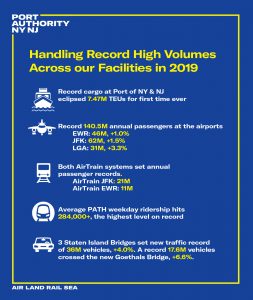
The Port Authority NY NJ has released new records for 2019. Image: Port Authority NY NJ
